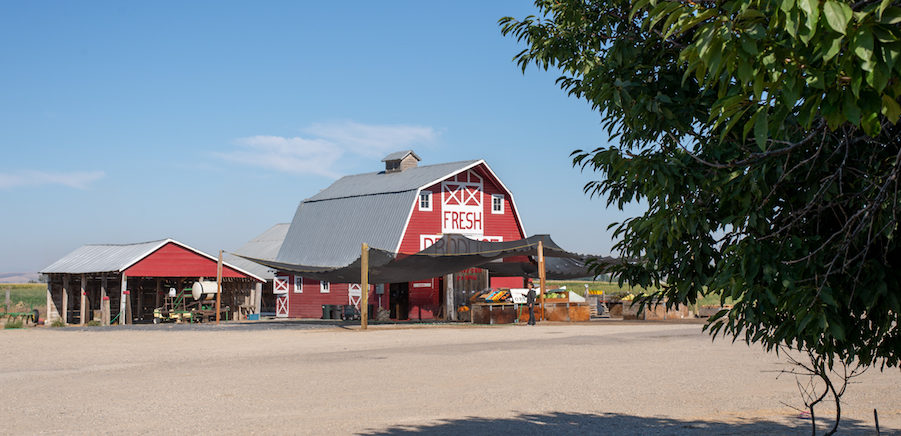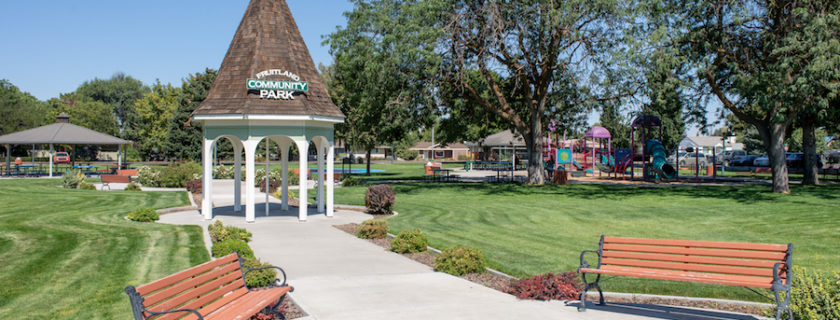It didn’t take long for our neighbors to drop in. Within twenty-four hours, they all stopped by for hospitality calls. The first family brought freshly baked banana bread, the next some hand-pressed apple cider, and the third a pack of home-made cheddar cheese smoked sausage. By the fourth day, we were invited to a monthly community gathering. The theme of the meeting was hand-churned ice cream. As we pulled up next to the non-descript, country-style town hall (more like a barn), children were running around outside and adults were chatting on the porch. Topics ranged from the local harvest to the merits of ice cream made with unpasteurized cream to how to install new electronic remote sensors for local water meters.
What is community—and where does it come from? Laura, my wife, and I pondered this question during the summer of 2017 while camping for three weeks on our property up in the northern part of the state. Our property is a 20-minute drive from the county seat of Bonners Ferry. Boundary County has a population of about 11,300 with an area of around 1,200 square miles. Simple math will tell you that Boundary County has only about 9 inhabitants/square mile. Is it possible to have a sense of community in such a sparsely populated place?
Community can mean a lot of things. In Boundary County, Idaho, it means people depending on each other. For example, our property is one of a group of 24 land-owners who own equal shares in a small water company called the Curly Creek Water Company. The company owns a 15,000-gallon cistern fed by 4 springs. One of the property owners chairs the water board, three more serve as board members, yet another oversees day-to-day operations and monthly water quality checks. One of our neighbors is the treasurer.
Another example is the all-volunteer fire department. The fire house is located next to the community hall (barn). It houses two older-model pumper trucks that are lovingly and meticulously cared for. The fire chief is another neighbor, and his all-volunteer brigade of fire men and women live throughout the local area.
A third example is the Ronager Root Vegetable Farm. This is a multi-generational enterprise that has farmed about 15-20 acres of organic vegetables for the last 40 years or so. The family maintains a year-round root cellar that can be accessed by all the neighbors. Depending on the time of year, one can find all sorts of vegetables—onions, carrots, leeks, turnips, potatoes (15-20 varieties), beets, and more—for sale. A simple set of scales and a jar are nearby. The “store” is self-service for the neighbors and based on the honor system.
Boundary County and the Curly Creek area are not a bustling metropolitan zone. Our land is a relatively modest parcel of about 30 acres. Most of our neighbors own more land—from 70 to 850 acres. But people rely on each other—from the water company to the fire department to sharing in what the land produces. And bonds and friendships formed by that dependency are real. I’m reminded of a wonderful older lady we met at that ice cream social. Her name is Claudia and she is in her early eighties. She lives up by Perkins Lake. Her husband passed away several years ago and she lives by herself on her farm. Folks check in on her regularly, pick her up, take her to church and grocery shopping, and seek her advice on vegetable gardening. Apparently, she is the local “green thumb.”
How does any of this relate to TVCA? At Treasure Valley Classical Academy, we have the opportunity to form a real community—the kind that comes from people depending on each other. Parents: you will depend on our faculty and staff to shape and mold your treasures into citizens of virtue and knowledge and keep them safe. We—the faculty and staff—will depend on you as parents to help uphold the school’s virtues off campus and to hold your children academically accountable.

Together, we are trying to accomplish something special, traditional, and noble. We are molding future citizens and encouraging them to strive to be virtuous in conduct, to grow in scholarship and learning, and to pursue a commitment toward civic responsibility. It takes real community to do that—the way American K-12 schools used to do it decades ago—collaboratively with parents as a community, bearing each other’s burdens and helping one another.
Truly depending on others like that can be discomforting and perhaps can make some feel vulnerable. But over time, that dependency grows trust, forms bonds and friendships, and builds true community. I think that is what many of us are somehow yearning for.
